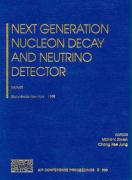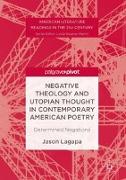Next Generation Nucleon Decay and Neutrino Detector: Nnn99: Stony Brook, New York, 23-25 September 1999
BücherAngebote / Angebote:
Even after more than 40 years of experimentation we have not observed the decay of the basic constituent of everyday matter: the proton. So far, the proton appears to be completely stable. This is very puzzling because reasonable models of physics predict that protons after living very long should break apart into lighter particles such as electrons, muons, and pions.
Over the last several decades both the experiments and the theory of particles have become increasingly sophisticated. The latest and best experiment (Super-Kamiokande) is in the Kamioka mine in Japan: it has monitored 20, 000 tons of water for more than 3 years to see decays of protons, none has been found. Yet the sheer size and precision of this experiment has allowed it to find evidence for neutrino mass by observing oscillations of neutrinos generated in the earth's atmosphere by high energy cosmic rays from outer space. Similar detectors in the past have observed neutrinos from the Sun as well as from Supernova explosions. This workshop was intended to find the next step in this process of experimentation. Should we continue the search for proton decay? The answer from this conference seems to be a definite yes! However, the answer for what sensitivity to achieve seems to be mixed.
Regardless of the exact answer about the type and size of the next detector, this project will be much larger than any of the previous projects. Therefore we need to create a consensus in the international physics community and also explore the likely synergistic impact of such a project on other fields of research such as neutrino physics and astrophysics.
Folgt in ca. 15 Arbeitstagen




